Latest News

By Vue Digital
•
October 26, 2022
EAGERS Automotive has opened a city-based service centre within a former Bunnings building as one of the first steps in supporting its development of the huge Brisbane Airport Automall automotive site. The two-storey Automall City Service complex, in the Brisbane inner-city suburb of Albion, is now servicing Holden models and employing about 20 staff but aims to boost its work over the Bunnings’ buildings two levels and employ up to 60 people. Eagers bought the Albion site in early 2019 for $14 million with plans for it to become a two- level express service centre for up to 12 brands, all the while providing dedicated brand experience. Its facilities will include a combined customer cafe. Eagers Automotive’s executive general manager, Gordon Haining, told GoAutoNews Premium that the Automall City Service centre in Brisbane’s suburb of Albion has opened one floor, which connects with Hudson Street for Holden service. “We have agreed with our manufacturer partners to move other brands in over the next two to three months,” he said. “We are also developing a proprietary Automall service app to enhance the customer experience. “This will allow all transactions to be completed on a mobile in under five clicks including selection of the customer’s preferred coffee which will be ready on their arrival. “The total focus is to provide a more convenient and efficient vehicle servicing experience for the customer – servicing how and when they want it. “All of this remains works in progress and gives a flavour of just some of our plans for improving efficiency and customer service. “We will be able to accommodate up to 60 staff in the areas of customer support, service and administration. “We have about 20 staff there now with the potential to grow to around 60 as we progress to servicing 100 plus cars per day on the one floor”. The floor has 18 express service bays plus additional bays and dedicated work areas for other functions including car washes. HDR Workshop Solutions was contracted to create the workshop within the two floors of the Bunnings building. HDR owner David Duncan said it partnered with Eagers to help with designing the layout and flow of the workshop. HDR helped adjust the final design and coordinate the services while liaising with Eagers and the builder, Armstrong Builders, during the fitout. “The Bunnings building was a challenging site because there was a line between making some compromises while still ensuring the finished workshop was as efficient as possible to make its operation profitable for the owner,” Mr Duncan said. “We look at the time-and-motion aspect of a design to ensure the people working in the space have easy access to all the things they need. “It’s a key indicator. It’s not about building a workshop for the cheapest price – it has to be built so the owner can make profit from it over time. “So it has to be sustainable over the long term. We know the owner will be in that building for the next 10 or 20 years.” It is not the first job HDR has completed for Eagers, having spent time assisting them as they changed the dealer group’s Holden outlets to suit other brands. Mr Haining said the Albion centre was to be an extension to what will be built at the Automall complex now under construction at the Brisbane Airport and further, to compliment the Automall West development in Indooroopilly Shopping Centre as part of the Brisbane Automall strategy. “The Automall will have a large 100 bay workshop with express service facilities, retail and warranty service and repair, and will be multi-brand to reflect our partner requirements at the airport,” he said. “Albion is an extension of that and is designed to offer an alternative convenience for people who may not be able to go to the airport or may work in the city or live in the city area, to have their car serviced.” Mr Haining said the Automall “is at least a couple of years away.” “It’s progressing very well and due to the scale of such an exciting project it means it will take some time to complete.” The transformation of the Bunnings building into a service hub was undertaken by Armstrong Builders and HDR Workshop Solutions. Article by Neil Dowling. Click here to view original source .
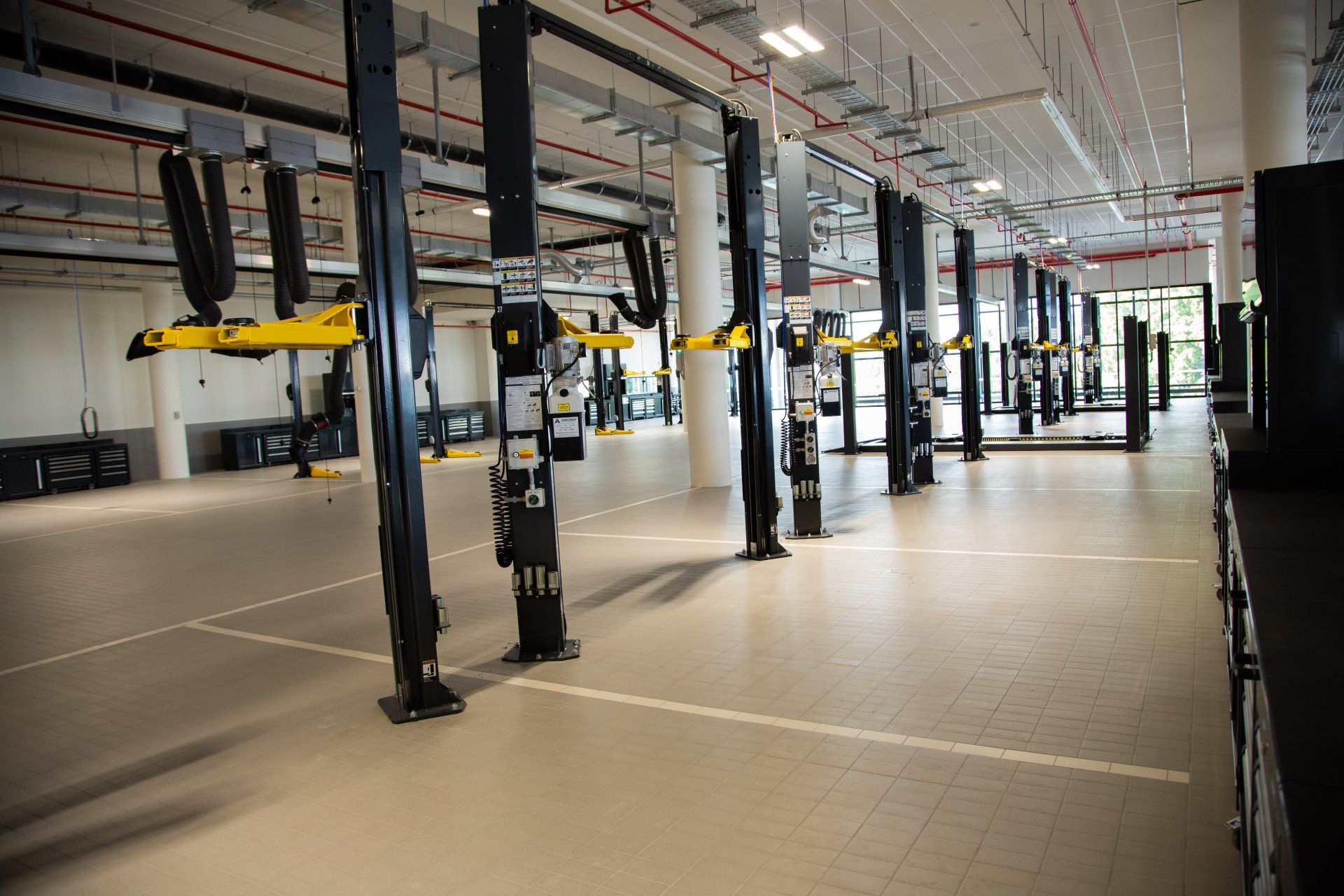
September 21, 2022
Launching a motor vehicle workshop to service and repair cars, trucks, and motorbikes is a dream shared by many entrepreneurial petrol heads. However, it’s a process that requires a lot of hard work, effort, and patience too. If it didn’t, every car lover would drive down this road. Before doing anything else, you’ll need to ensure that you have the finances to launch your business in the correct manner. As far as the establishment and management of the workshop are concerned, the five steps below will put you on the right track. Step 1: Designing The Right Space Location scouting is a particularly important assignment. The commercial premise needs to suit your budget, be located in an area that’s accessible to clients, and provide enough space to complete the necessary repair jobs and servicing. Wide access, natural lighting, space for pits, space for lifting vehicles, and designated areas for equipment and tools are all essential considerations. A professional workshop design service ensures that every aspect of organisation, storage, access, and power supply are under control. In turn, this will make the workspace far more efficient. A productive working environment is central to your hopes for ongoing success. Do not forget it. Step 2: Finding The Right Equipment In addition to a quality workspace in an equally perfect location, you’ll need to kit it out with all the necessary features. Without the right equipment and tools, you’ll be unable to complete jobs to the desired standards in the desired timeframes. Vehicle jacks, ramps, bottle acks, hydraulic presses, wheel dollies, welders, and a host of other accessories will be required to provide a comprehensive service. Finding high-quality and reliable goods at an affordable price is crucial while you’ll also need to think about the general toolkits such as wrenches, bolts, etc. Stocking a range of popular spare parts will allow you to offer faster turnarounds. Step 3: Building The Right Team If you are planning to take an active role within the business, you’ll need to gain your formal training as a mechanic. Whether you do this or merely wish to serve as a passive owner, your input on those daily tasks will be far smaller than the work of your employees. As such, assembling the strongest possible team should be one of the top items on your agenda at all times. The best candidates should have the education needed to thrive as well as experience of working with a wide variety of vehicles. Their communication skills with clients will be vital too, especially as clarity and transparency are ket at all times. A team that works together succeeds together. Invest heavily in your team for the best results. Step 4: Knowing The Right Audience There are many types of auto workshops available throughout Australia. As an alternative to an all-in-one general workshop, yours could focus on bikes or vans. Or it could be tailored to a certain manufacturer of car or a specific area of assignments. The choice is up to you. Once you’ve made those decisions, you can turn your attention to marketing exploits. Local SEO will play an important role in your digital strategy, but the ideal consumer profile will influence which social media streams and PPC campaigns are deemed best. Likewise, it can help pinpoint the best offline ad opportunities. You’ll also find the most cost-effective campaigns, which is particularly crucial in those early moments. Step 5: Providing The Right Service Setting up a great workshop supported by the best team of mechanics should serve you well. The quality of your marketing strategies will be pivotal for winning new clients. However, sustained success will emanate from your ability to secure their long-term loyalty. The only way to do this is through a world-class service. Aside from being quick and affordable, all jobs should be completed in a friendly and convenient manner that is built on a foundation of strong communication. Using your expertise to enhance their driving (even when it doesn’t require upselling) will provide a far greater sense of value. When clients are happy with the service, they’ll also tell friends and family. The Final Word A successful vehicle workshop requires the right tools, right people, and right approach to the associated services. When your business can provide all of these while simultaneously satisfying your financial needs and providing great value to the client, success is virtually assured. Still require a little help designing your perfect motor repair workshop? Then give one of our friendly experts a call.
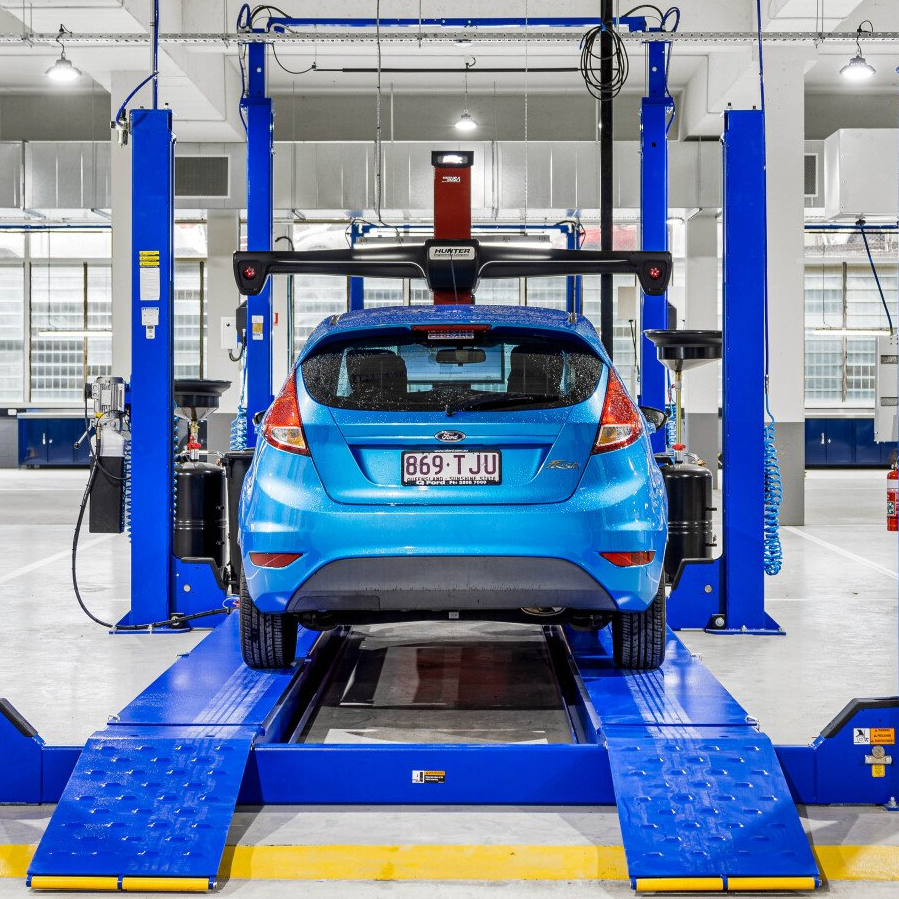
September 21, 2022
There are many type of vehicle hoists available on the market today and vehicle hoists have evolved over time, from what we would now consider a “primitive” in ground single post/air driven lift, to the many different styles of modern and safe vehicle lifts available today. Back in the early days of the automotive industry when mechanics had to perform work underneath a vehicle, they would simply climb under the vehicle, they would park the vehicle on a set of ramps to get a little more clearance, the would jack the vehicle up and put it on stands or they would do their job while standing inside a pit in the ground, none of these types of solutions is really suited to today’s modern fleet or workforce. Thanks to advances in technology and manufacturing we now have a large range of different styles of vehicle hoists that serve to make repairing vehicles much easier. It is suggested that the ideal size for the average automotive dealership work bay is 4000mm wide and 7000mm long with minimum ceiling height of at least 4200mm, this allows for a safe amount of room to perform work around the vehicle and also allows for a bench and tool box at the front of the bay. The vehicle needs to be lifted to a reasonable height so that you can work on all styles of vehicles safely and comfortably. If you are servicing larger vehicles, then the bay size and ceiling height may need to increase. There are four main styles of vehicle lift on the market today and they all play a different role in workshops. There are Two Post hoists, Four Post hoists, Scissor Lift hoists and Mobile column lifts and I have briefly expanded on the differences below. The lift you choose or that will most suit you is driven by the type of work that you perform in your workshop and by the type and size of vehicles that your clients bring to you for repair. Some things to consider Quality over price is critical The industry has been flooded with poorly made hoists that don’t comply with local workplace laws. Buying a hoist is a solid investment so take the time to understand the differences between the types of hoists and make sure to choose quality over price. Remember you are entrusting your life or the lives of your employees to the safety and security of the hoist that you purchase, so it is a good idea to allow your buying decision to be guided by the quality and safety reputation of the equipment rather than by the cheapest offer available. After sales support Ask the supplier (and your colleagues in the industry) about the equipment brand reliability and reputation, ask about the parts holding levels for repairs, ask who does their installation (is it done by their in house factory trained technicians or subcontracted out to a third party), ask if they perform the mandatory annual safety inspections (again check if it is performed by the supplier or do they give that responsibility to a non-involved subcontractor). Compliance Make sure that the hoist that you are going to purchase meets local workplace laws and requirements, ask if the hoists are certified and ask for a copy of the certification number. Life span – replacement plan A hoist in a dealership environment will do more work and hence wear more quickly than a hoist in a home workshop so take that into account and consider the life span of the equipment. We suggest to operators of high use dealership workshops that they create a hoist replacement plan, so that as the hoists age they allow for the cost of a replacement hoist in their budget to keep all of their equipment fleet modern and late model (under 10-15 years of age). We have found from our maintenance records that hoists that are over this age become increasingly more expensive to maintain. By having a late model fleet of hoists you can ensure that the running costs of the equipment are kept to a minimum during the time that the equipment is productive for you. Think of a hoist in the same way as you would a vehicle, low kilometre late model vehicles cost less to run and maintain and are more reliable that high kilometre older model vehicles. A second-hand hoist is best used in a home workshop where the lift cycles or usage will be considerably lower than in a retail environment. Two Post Hoists Two post hoists have become a significant part of the automotive repair industry and make up the largest proportion of the hoist market. These hoists, of which there are many variations, lift the vehicle with a set of arms that engage the chassis and lift the vehicle so that the wheels are left suspended in the air allowing the mechanic easy access to the wheels and brake systems. They are ideally suited to general servicing and repair work and they are the most cost-effective hoist on the market today. They provide mechanics with space and clearance that they need to work around a vehicle efficiently. They suit most tasks within the workshop environment from oil changing, wiring installation, gearbox and clutch repair through to exhaust system jobs. They come in three main variations: Base model two post hoist This style of hoist has a joining bridge on the ground between the two posts to allow for the lifting cables and electrical wiring to connect from one post to the other. These hoists are ideally suited to locations where roof clearance is an issue, the drawback is the joining bridge between the posts can hinder gearbox removal and also create a trip hazard underneath the vehicle. Clear floor model two post hoist This style of hoist has a joining bridge between the top of the two posts to allow for the cables and electrical wiring to connect from one post to the other above the vehicle. These hoists are the most widely used hoist on the market as they allow clear open access under the vehicle and they are the most popular and cost-effective hoists on today’s market. In ground or flush mount two post hoists These hoists are contained in a capsule that is placed in the ground so that effectively the only part of the hoist that is above ground are the two sets of lifting arms to engage and lift the car. These hoists are perfectly suited for modern workshops that desire a clean clear clutter free look to them, they have all of the benefits of a two-post hoist without the two posts that sometimes limit access and movement around vehicles. The initial purchase cost is much higher than a standard two post hoist and they need a large pit for the capsule to be lowered into the ground. They are best suited to a new build where the capsules can be allowed for in the foundations however they can be retrofitted to an existing workshop with some excavation work. The big advantages of two post hoists are the ease of access to components of the vehicle for many different tasks, they leave the wheels suspended free, they take up less space than a 4 post hoist and they are the most widely used and economical hoist to purchase. The weight capacities of this style of hoist usually range from 3000kgs up to 8000kgs. The main disadvantage of this style of hoist is that vehicles that are unevenly weighted can be difficult to lift and some manufacturers have vehicles that they recommend not to lift on this style of hoist. Four Post Hoists Four post hoists have ramps that enable the car to be driven onto them so that mechanics can lift the vehicle with the wheels on the platforms, allowing them to perform complex maintenance work. These lifts are best suited to lifting vehicles that are unevenly loaded and for wheel alignment procedures, they can be equipped with rolling jacks to raise and lower the front or back axles of the vehicle to allow the mechanic to work on the wheels or brake systems. The weight capacities of this style of hoist usually range from 3000kgs all the way up to over 20000kgs for truck and heavy vehicle workshops. The advantages of this style of hoist are that they are very stable and suited to lifting heavy or unevenly loaded vehicles. Scissor Lift Hoists Scissor lift hoists are ideally suited to work bays and workshops where space is limited or in dedicated wheel alignment bays. There are four main types of scissor lift hoist and then there is a modern variation of a scissor lift hoist referred to as a knuckle boom: Motorcycle lift, these hoists are specially designed to lift a motorcycle or quad bike off the ground for servicing and major repair. They often have a clamp to lock the front wheel in place and usually have removable floor panels to allow the mechanic access to remove the wheels. Mid-rise scissor lift, these hoists lift the vehicle only 600mm to 1000mm off the workshop floor, these are usually used for tyre changing in tyre shops or accessory fitting in pre-delivery centres. Full height service scissor lifts which engage the cars chassis and lift the car to full working height (normally around 1800mm off the ground) These hoists have the benefit of a two post hoist in that all of the wheels and brakes are suspended for clear access without the need to have lifting posts on either side of the car, this attribute allows them to be installed in very narrow bays or where space is limited. They are ideally suited to quick service bays. The disadvantage is that the lifting mechanism is under the vehicle and can make them a difficult hoist to perform major mechanical repairs such as gearbox changes or drive line work. If you plan on lifting 4wd vehicles or vans then make sure to request an additional adapter kit designed for lifting these style of vehicles. Wheel alignment scissor lifts have platforms similar to the four post hoist, they are designed for the car to be driven onto a set of platforms but unlike the 4 post hoist they do not have posts at each corner, they have instead a mechanism under each platform that lifts the vehicle up to working height. They are ideally suited to wheel alignment bays as they allow for clear access along each side of the vehicle and once the vehicle is lifted off the workshop floor they allow the technician easy access to make adjustments to the cars steering linkages for the alignment. Knuckle Lift hoists, while technically not a scissor lift hoist it falls into a similar class as its footprint is very much the same as the scissor lifts above. They are primarily designed as a heavy-duty lift and are used extensively in truck workshops and busy automotive dealership shops. The initial purchase cost of this style of hoist is usually higher than an equivalent scissor lift but they do have specific applications in the market today. These hoists are very stable and are being used for wheel alignment applications, they are however, a complicated hoist which needs dedicated regular expert maintenance. Scissor lift hoist lifting capacities range from 400kgs for motorcycle lists right e up to 6000kgs for the examples 1-4 however the Knuckle lift hoists in the last example can be configured to raise large heavy vehicles well over 30000kgs. Mobile Column Lifts This is a heavy-duty style of lift that is most suited to heavy truck workshops, the columns are mobile and can be utilised in different locations around the workshop or even outside on concrete surfaces. Each of the columns is rolled under a wheel and they are synchronised to lift the vehicle up to a safe working height, between 4 and up to 8 columns can be connected together to lift trucks and even prime movers while still connected to their trailers. Heavy stands can be rolled under the vehicle allowing the vehicle to be lowered onto them so the technicians can work all around the vehicle, this allows the columns to be then utilised elsewhere in the workshop by the technicians to lift another vehicle for repair. There are many different types of vehicle hoists available on the market today and they all do what they are designed to do which is lift vehicles, however as you can see from the descriptions above it is wise to do your research before purchasing your next hoist.
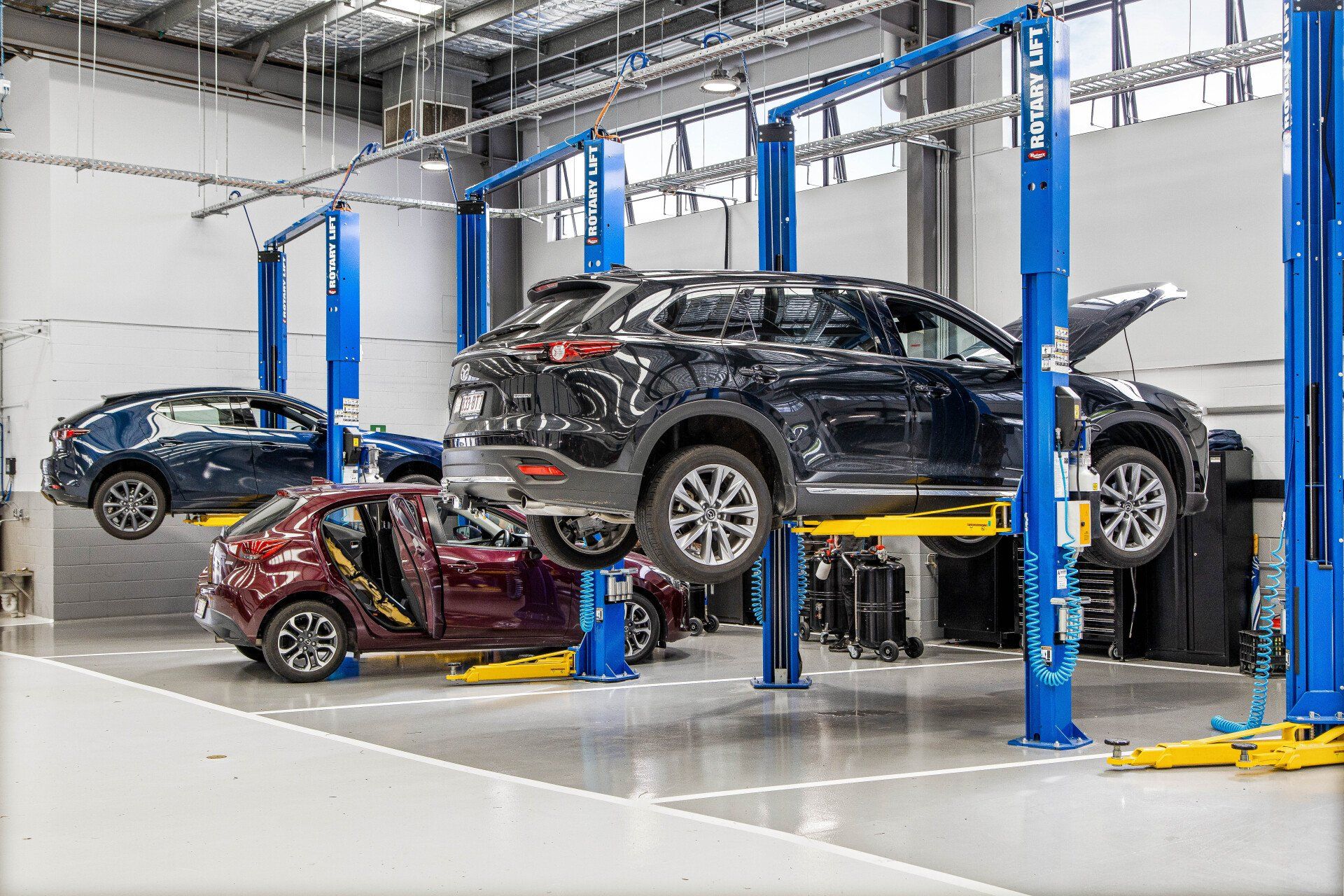
September 21, 2022
I often get asked by clients about the life span of hoists, how old is too old and when should they be replaced. There really is no hard and fast answer to the question, but there are lots of factors to consider when answering. Some of the factors to consider are: The number of cycles that the hoist has completed (a cycle is one raise and one lower movement) a dealership hoist will do approx. 6 cycles each day which equates to 1560 cycles each year. The maintenance history of the hoist The type of loads that the hoist has been lifting (lifting heavy vehicle wears parts on hoists faster than lifting lighter vehicles) The wear history of the same brand and model of the hoist across the industry to discover any brand centric problems The condition of the hoist and the demand that will be placed upon the hoist in the future. Some influencers in our industry are stating that once a hoist is 25 years old that it is automatically “no longer safe” and needs to be replaced, not surprisingly these are the same people who manufacture vehicle hoists and really want you to buy a new one, so forgive my cynicism. It is impossible for me to believe that at 24years +364days old your hoist is safe to operate and yet the next day it is no longer safe to use and MUST be replaced, crazy right?? On the flip side of that would you let your son or daughter work under an unsafe vehicle hoist and the answer quite rightly is NO, so somewhere there needs to be a balance in the conversation. I guess the real question to ask is, "how old is too old for any piece of machinery?" There are many views on this and you could argue that if you maintained your favourite EH holden sedan to factory specs, that you could continue to drive it forever without issue and that is a viable and real argument. However, if I then asked if you would entrust the EH to one of your employees to operate every day to use to drive 100km to and from work and do deliveries to your customers then you might answer the original question differently. It comes down to use, operating conditions, demand and maintenance. The goal with any equipment purchases for a business is to get a high return on investment as quickly as possible so that you can return a profit from the equipment in your business. The average vehicle hoist will cost you around $7000+GST delivered and installed and if you lease it over 4 years the average payment will be less than $10/week day. While a vehicle hoist is a large initial investment the cost is not huge when you break it down like this. You should be able to recover your hoist cost each day before smoko in every bay that you have one fitted. If you run a fleet of vehicles the late model low km vehicles will return you the best value for money and suffer less downtime than older equipment, because, as equipment wears, it requires more maintenance to keep it running and on the road, vehicle hoists are no different in this respect. We recommend to our high use dealership clients that they view all of their hoists as a 10 – 15 year investment, 5 years to pay the hoist off and 5 – 10 years to enjoy the benefits of the equipment and then replace them before the ongoing costs of maintaining the hoist start to ramp up. As a business we currently service more than 1300 hoists each year and we have found that as hoists age we are faced with issues of lowered factory support and marginal parts supply and this inevitably means longer downtime when something fails on aging hoists. We have hoists on our books that we carryout annual inspections on that are more than 30 years old and they are still performing well due to the efforts of their conscientious owners, who follow a solid maintenance regime. Remember the statement “They don’t make em like they used to!” this is true in our society for everything that we purchase, so be aware that a large percentage of the hoists available today will be unlikely to make the 20 year+ mark let alone the 30 year mark due to lower standards of manufacturing and quality. If you want to get the best possible return on investment, then pay close attention to your daily, weekly, monthly checks in-house, maintain and service your equipment in accordance with the manufacturers guidelines and the Australian Standards and engage a reputable service company to help you develop a maintenance and where required a replacement plan.
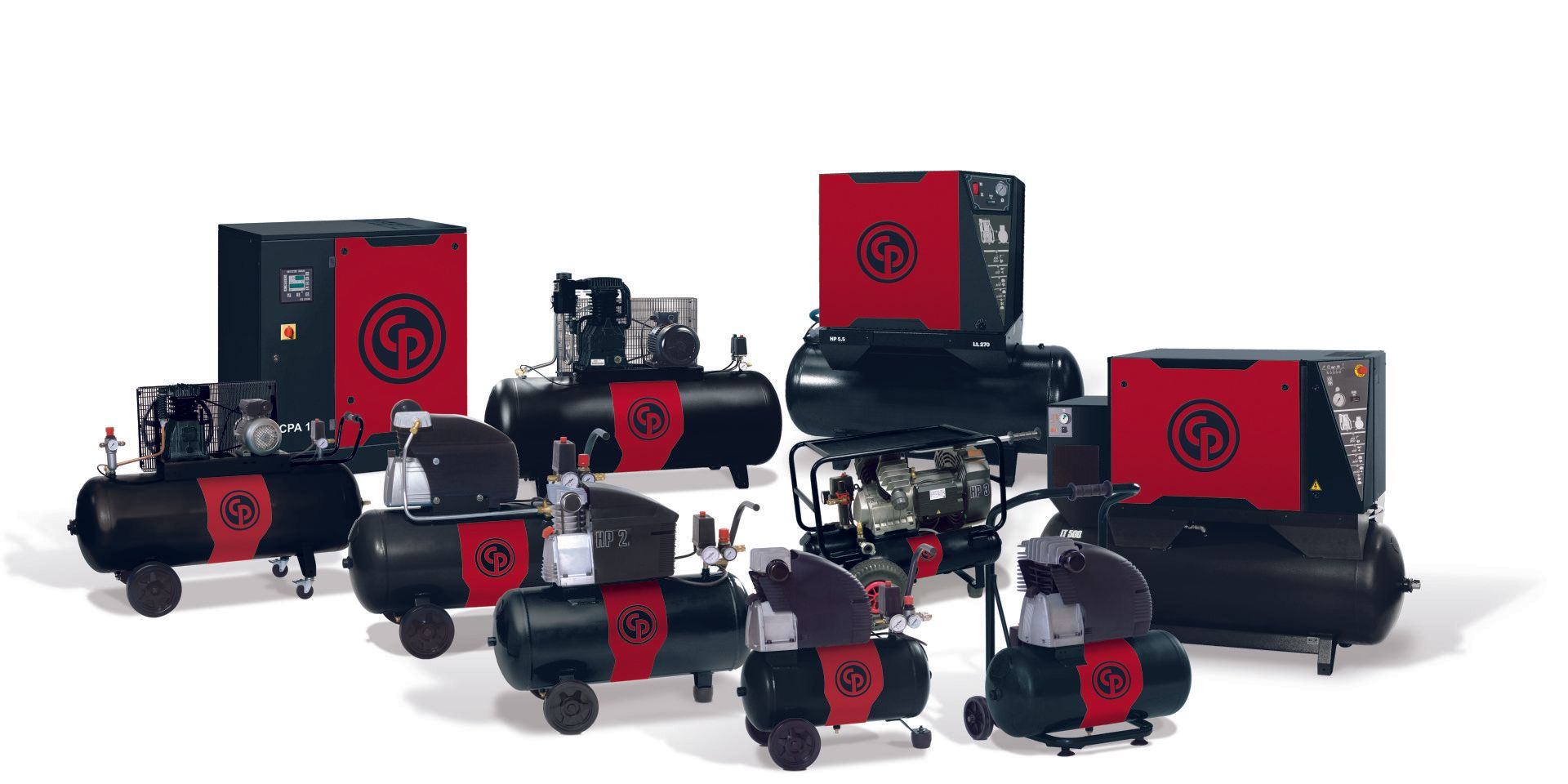
September 21, 2022
The right compressed air solution for every application From the smallest jobs right up to large manufacturing applications, air compressors play an important part in industry. The 6 things you should consider when buying an air compressor When you are considering buying a compressor, there are many options and it can all seem very confusing, so we have put a quick guide together to help you. Below are 6 basic guidelines to help you unravel the mystery. 1. Work out how much compressed air you require Define the tools you will use to determine the total air delivery that you will need. It is referred to as your Free Air Delivery requirement (FAD). In Australia FAD is most often expressed in CFM (cubic feet per minute) and less often L/sec (Litres per second) or L/min (Litres per minute) To select the right compressor, you need to know the total CFM, L/sec or L/min of all your individual air tools that you are going to use at once. Add an additional margin of 25% to cover inefficiencies in your air system and for future growth. FAD is a very important part of selecting the correct compressor. 2. Select the TYPE or STYLE or Compressor you will need Once you have defined the FAD then you can check if you need a piston or rotary screw compressor. As a general rule, if your usage is low to intermittent and below 50CFM then a piston compressor will most likely be adequate for your needs. If you place a high demand on your compressor and compressed air is used constantly in your workshop then a rotary screw compressor is most likely to suit your needs. Compressors that are driven with petrol and diesel motors are available if you need your compressor to be mobile. 3. Work out the electrical supply for the size of compressor Single phase compressors are limited to around 16-18CFM (FAD) and use lower amounts of electricity. Once your FAD demand is higher than 16-18CFM you will need to use a three phase compressor. If you have not got access to three phase power then you may need to consider reducing your demand (FAD) or choosing a petrol or diesel driven compressor instead. The size of the electric motor on the compressor is determined by the size of compressor that you select, your electrician will be able to advise you on the electrical supply that you need for the compressor based on this information. 4. Define the comfort you need in terms of noise level If you place your compressor outside or in a separate compressor room and run air piping into your workshop, there are less requirements considering the compressor noise level. If you want to position your compressor inside your workshop or close to your working area then noise will become an issue for you. Silenced piston compressors and rotary screw compressors emit lower noise than standard piston compressors. 5. Control the air quality Air quality plays a large part in the life of your air tools and equipment, if you supply your air system with clean, dry compressed air then you will prolong the life of your air tools and equipment. Refrigerated air dryers and filters help deliver clean dry air to your compressed air tooling and equipment. 6. Check the brand quality, ease of maintenance, parts and service availability This is where paying a little more upfront really pays off in the long run. For the best return on your compressor investment, buy based on quality rather than price. Look for guarantees, warranty, consider build quality and ongoing support for parts or service so you can enjoy a long, safe and efficient life from your compressor. Check serviceability of the device, service intervals and if easy access to parts and services is guaranteed. If you want to verify your choice, o ur team is ready to support you with their professional advice on compressors. HDR Workshop Solutions will work with you to keep your business running just the way you want it. If you aren’t sure on the size of compressor that you need or if you need help choosing a new compressor or fixing an existing compressor, please contact the great team at HDR Workshop Solutions.
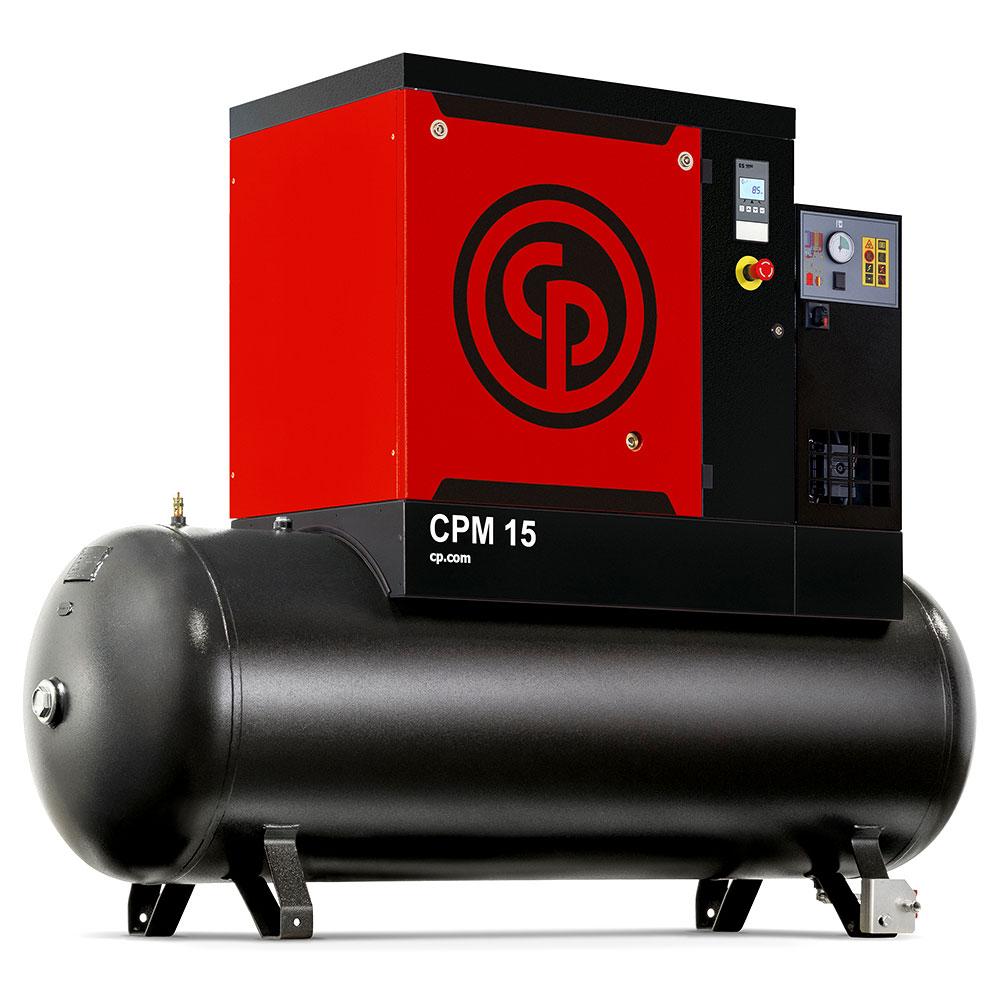
September 21, 2022
Compressed air plays an integral role in breweries both large and small around the world. From start to finish, all details in the brewing process are managed in fine detail and having the right air compressor is no exception. What kind of air compressor does my brewery need? Choosing the right air compressor for your brewery is just as important as the amount of hops you add to your latest batch. You must first determine what role or what use the air compressor will have in the brewery. Piston/Reciprocating Compressors – Piston compressors are best for low-pressure, low demand tasks such as keg washing. These air compressors use pistons to compress the air and are most often used in small microbreweries. Rotary Screw Compressors – Rotary screw compressors are necessary for higher pressure tasks such as bottling or canning, which requires higher air flow Air flow is measured in cfm (Cubic Feet per Minute), l/s (Litres per second) or m3/hr (Cubic meters per hour) and is usually specified by the equipment supplier to run their specific equipment. What else can an air compressor accomplish in my brewery? In addition to keg washing and bottling/canning, air compressors are also useful tools for other tasks around the brewery. Aeration is an important process in brewing, which involves adding oxygen to the yeast during fermentation. Compressed air is also used to power machinery during the clarifying process. The pressure of the air removes solids and gives a cleaner final product. If you need help deciding which compressor is right for your brewery, Chicago Pneumatic has you covered. Please contact HDR Workshop Solutions for assistance on choosing the compressor that’s right for you. Whether you have questions about which compressor is right for you, or if you’re ready to improve your operations and start saving on expenses. HDR Workshop Solutions has been around for over 30 years, we offer reliable and hardworking air compressors, as well as expert advice and support.
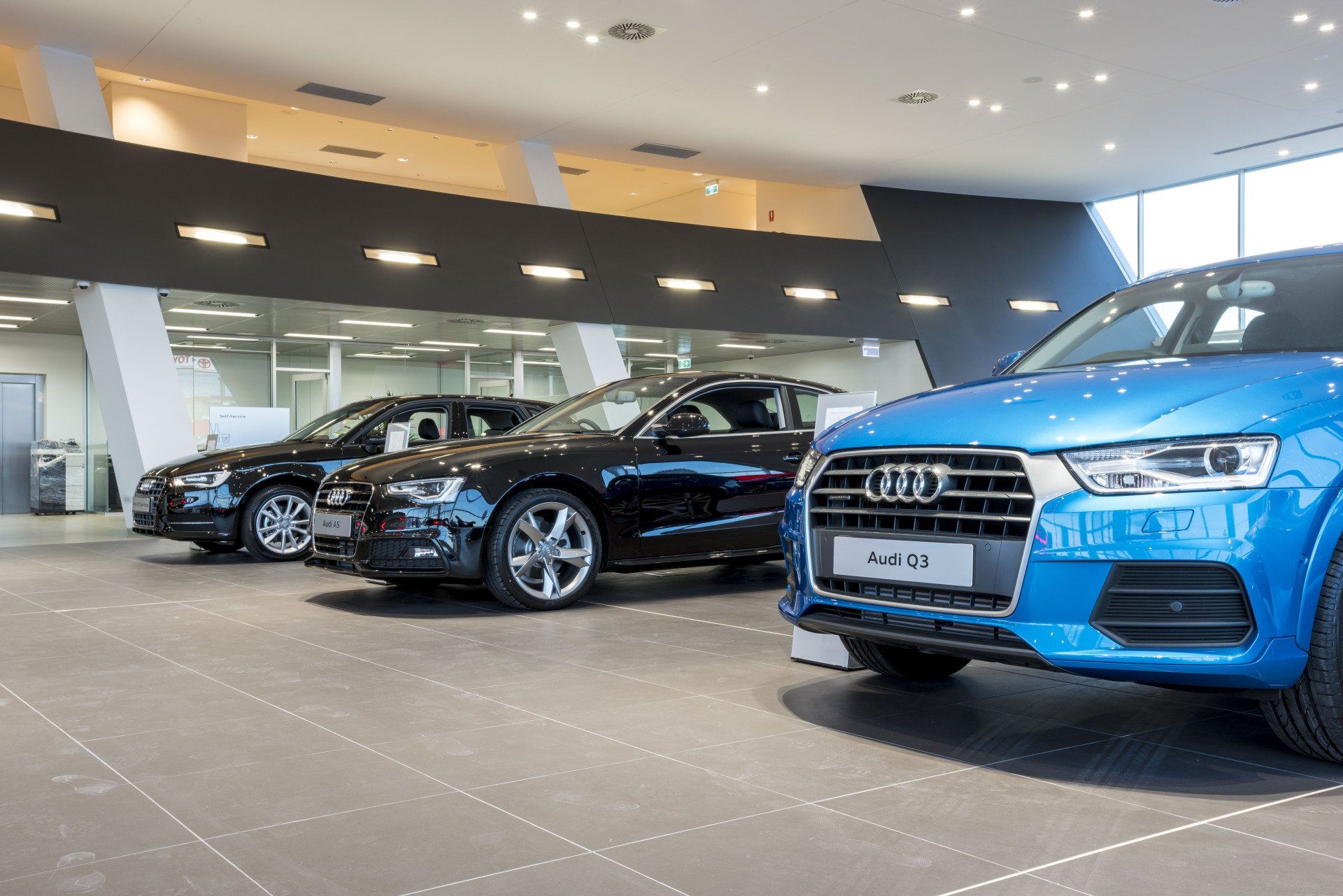
September 21, 2022
Contaminants in compressed air The air produced by the compressor, contains the same substances as the ambient air. This means, among other things, that the water vapor contained in the air, is compressed and the compressed air therefore has a high humidity. Compressed air from an oil injected screw compressor also contains small amounts of oil residue from the compressor lubrication system. The average value, for screw compressors oil content, is about 3ppm. When the compressed air is to be used for body painting, there is a higher demand for air quality, than in many other applications. The requirements referred to above apply in particular to what is accepted in terms of contaminants such as water, particles and oil. Removing contaminants for vehicle body painting We recommend that the humidity is always to be reduced by drying. This is most easily and economically done with a refrigerant dryer that gives a pressure dew point of about 3 degrees Celsius. We also recommend installing particle filters, to reduce the amount of particles that come into the compressed air. In addition to particle filters you should also install an oil separating filter, that removes the residual amount of oil, that always comes with compressed air when you have an oil injected screw compressor. If you want to be absolutely sure, that no oil will be included in the compressed air, you can complete the filters above with an activated carbon filter. When supplementing other filters with an activated carbon filter, one achieves a quality called “technical oil-free” compressed air. Please contact us directly if you have questions or need for compressed air that will be used for all types of paint jobs, and we will help you, improve your existing installation or give recommendations for a new installation. Whether you have questions about which compressor is right for you, or if you’re ready to improve your operations and start saving on expenses. HDR Workshop Solutions has been around for over 30 years, we offer reliable and hardworking air compressors, as well as expert advice and support.
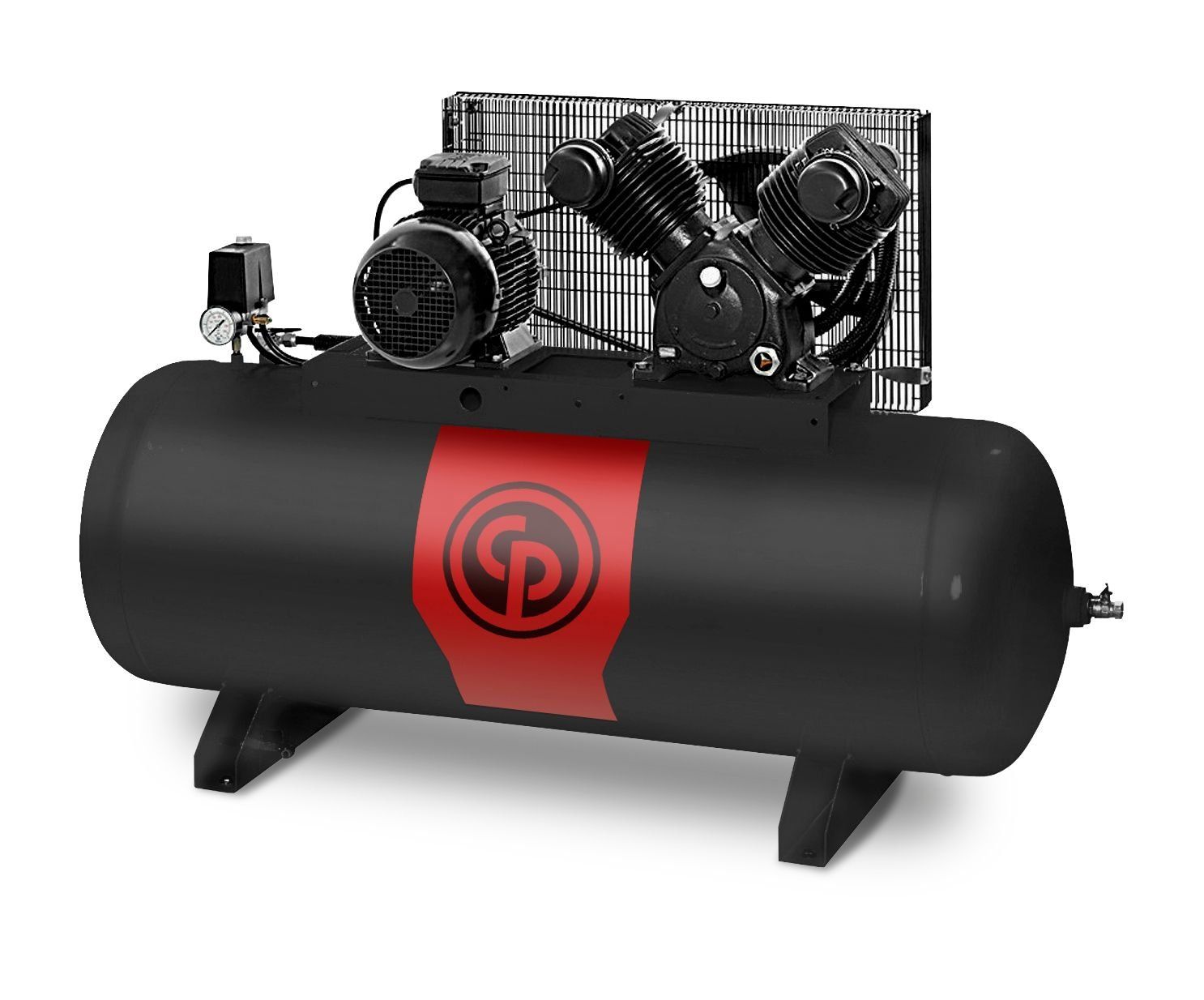
September 21, 2022
Air compressors should be sized based on the volume of air (cfm/m3h) and air pressure (psi/bar) needed to do the job and not horsepower. Single stage air compressors have a maximum pressure of around 130 psi (9 bar) while two stage air compressors have a maximum air pressure of 175 psi (12 bar). Tank size is typically not a critical factor in sizing a compressor. Calculating your need What is the maximum pressure you need? (refer to the table below for a general guideline) What is the electrical requirements (voltage/phase)? How many people will be using air at any time (maximum)? Is this a body shop or mechanical shop? Body Shop: 12-15 cfm/person X # of people and Mechanical Shop: 3-5 cfm/person X # of people. Now add at least 25% to your total cfm required in order to allow for duty cycle. Typical cfm consumption by tool
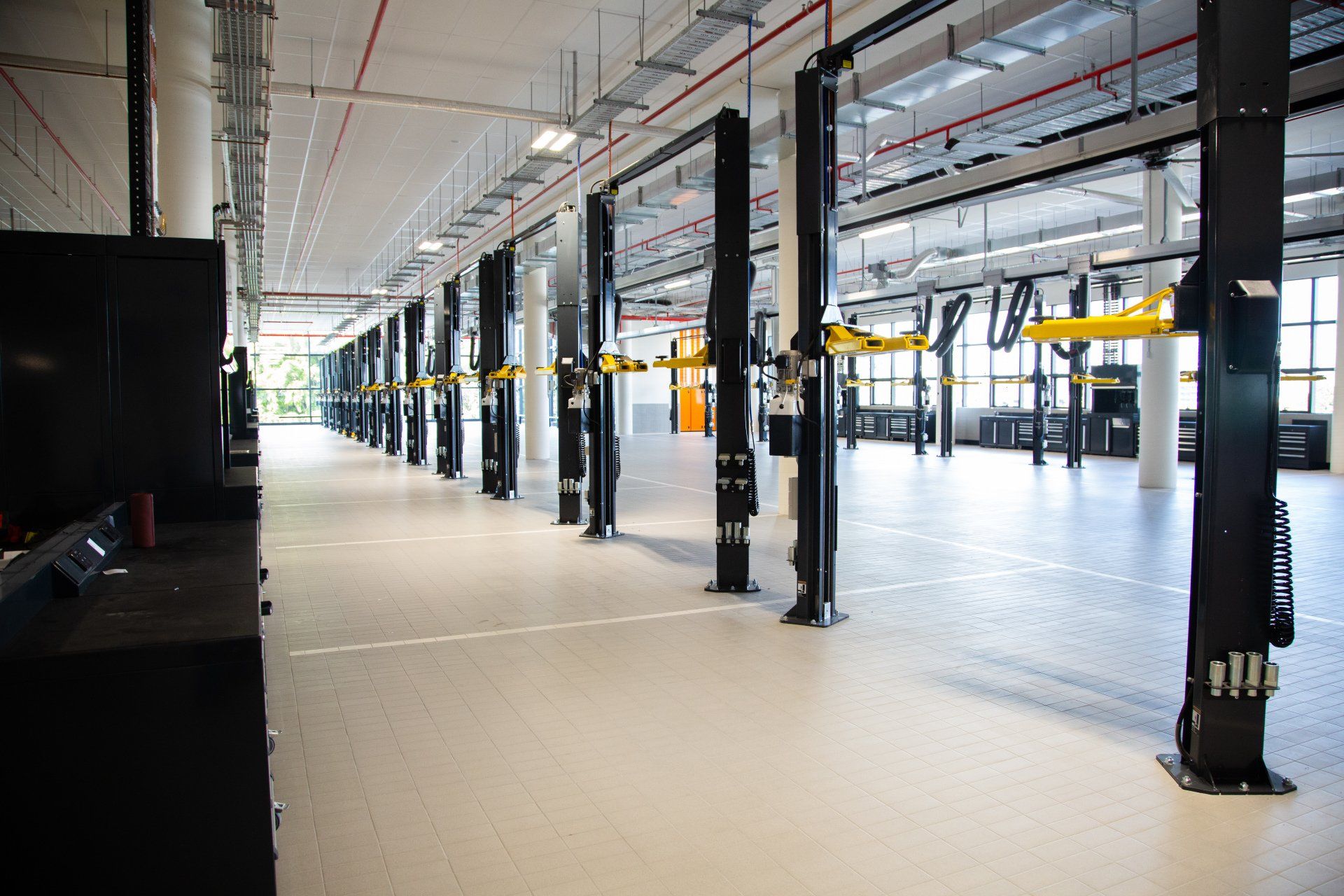
By Vue Digital
•
May 29, 2022
Setting up a new motor vehicle workshop is never easy. It’s something that takes a lot of time and attention to detail to get right. At the end of the process, you want a facility that enables you to service and repair cars quickly and efficiently, while making a healthy profit, but getting there can be a challenge. Take a look at our top workshop design tips!
